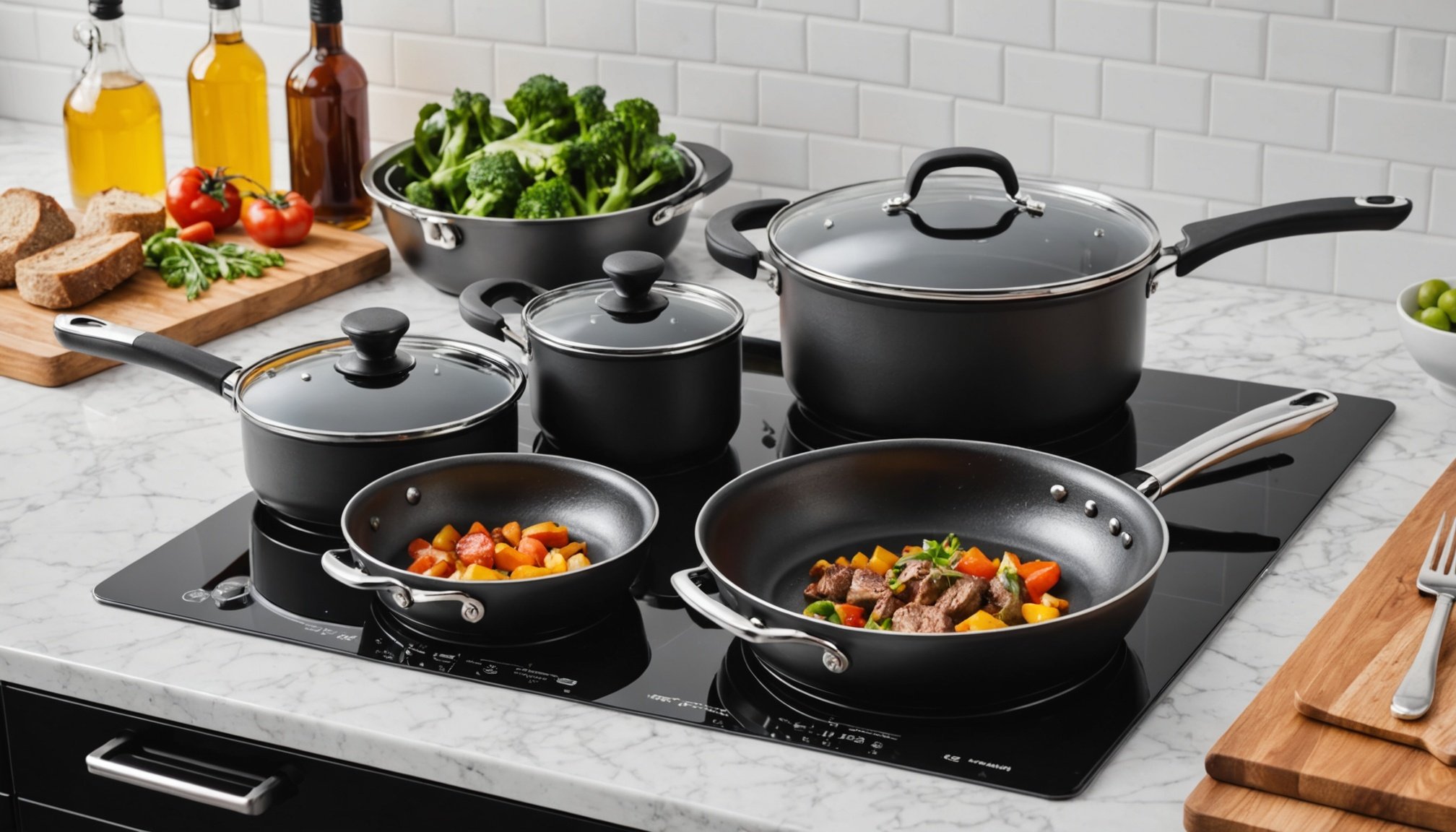In recent years, induction cooktops have sparked a culinary revolution, transforming not just how we cook but how we think about our kitchens. Their efficiency and speed make them a preferred choice for both home cooks and professional chefs. However, the seamless integration of induction technology hinges on one critical factor: the right cookware. From steel pans to cast iron sets, the compatibility of your cookware with an induction cooktop determines the success of your culinary endeavors. Join us as we delve into the world of cookware, exploring the best options suited for induction cooking.
Understanding Induction Cooktops
Induction cooktops represent the pinnacle of modern cooking technology. Unlike traditional gas or electric stoves, induction cooktops rely on electromagnetic fields to generate heat directly in the cooking vessel. This means pans and pots themselves become the source of heat, offering precise temperature control and consistent cooking results. But not all cookware is suitable for this innovation.
Also to see : How can I improve the air quality in my home with air purifiers?
To be compatible with induction cooktops, cookware must contain ferrous (magnetic) materials. Essentially, if a magnet sticks to the bottom of your pan, it will work on an induction cooktop. This necessity restricts the range of available cookware, yet it ensures that your cooking experience is both efficient and effective.
Key considerations:
Also to read : How can I ensure my air conditioning unit runs efficiently?
- Efficiency: Induction cooktops heat pans rapidly, reducing cooking times.
- Precision: The ability to control temperature quickly and accurately is unparalleled.
- Safety: The cooktop itself remains cool, minimizing the risk of burns.
- Energy-saving: Induction is more energy-efficient than gas or electric alternatives.
For those transitioning to induction cooking, understanding these nuances is the first step towards selecting the best cookware.
Stainless Steel: A Versatile Option
Stainless steel cookware stands out as a versatile and enduring choice for induction cooktops. Its durable nature, aesthetic appeal, and superior cooking performance make it a favorite in both home and professional kitchens. The key to its compatibility lies in its composite structure, often layered with an aluminum or copper core, which enhances heat distribution while retaining the magnetic properties essential for induction.
Why stainless steel is ideal:
- Durability: Resistant to rust, stains, and corrosion, stainless steel cookware can last a lifetime.
- Heat Distribution: Modern stainless steel cookware is usually multi-layered, providing even distribution of heat, preventing hot spots, and ensuring that food is cooked uniformly.
- Safety: Non-reactive with acidic foods, stainless steel maintains the natural flavor of your dishes.
- Versatility: Suitable for frying, boiling, searing, and more, it’s a true workhorse in any kitchen.
When purchasing stainless steel cookware for your induction cooktop, consider sets with a flat base to maximize contact with the cooktop surface, enhancing energy efficiency and cooking speed.
The Intrigue of Cast Iron
Cast iron cookware has an almost mystical allure. Its traditional and rugged design contrasts with modern kitchen appliances, yet it remains a cornerstone for many chefs. Its inherent magnetic properties make it an ideal candidate for induction cooking.
Exploring cast iron benefits:
- Heat Retention: Known for its unparalleled ability to retain heat, cast iron is perfect for slow-cooked meals and dishes requiring steady heat.
- Versatility: From stovetop cooking to oven baking, cast iron pans and Dutch ovens can handle a variety of culinary challenges.
- Durability: With proper care, cast iron becomes more nonstick over time and can be passed down through generations.
- Flavor Enhancement: Regular use and seasoning of cast iron cookware contribute to a distinctive flavor profile in your dishes.
While cast iron has many virtues, it’s crucial to maintain it properly by seasoning regularly to prevent rust and to avoid harsh detergents that can strip its protective coating.
The Rise of Carbon Steel
Carbon steel cookware is gaining popularity among culinary enthusiasts and professionals alike. Sharing many attributes with cast iron, carbon steel offers a lighter alternative with similar capabilities. It combines the heat retention of cast iron with the sensitivity and responsiveness of stainless steel, making it an excellent choice for induction cooking.
Why carbon steel is gaining traction:
- Weight: Lighter than traditional cast iron, making it easier to handle.
- Versatility: Ideal for both high-heat searing and delicate cooking techniques.
- Durability: When properly cared for, carbon steel cookware can develop a nonstick patina similar to cast iron.
- Compatibility: Works seamlessly on induction cooktops due to its magnetic properties.
To fully harness the benefits of carbon steel, regular seasoning and careful maintenance are essential. However, once seasoned, it offers one of the most rewarding cooking experiences, balancing modern compatibility with traditional cooking methods.
Selecting the right cookware for induction cooktops is an investment in your culinary journey. Whether you opt for the timeless appeal of cast iron, the versatility of stainless steel, or the modern allure of carbon steel, each choice offers unique benefits. What’s paramount is ensuring that your cookware harmonizes with the technology of your cooktop.
As you explore the myriad of options available, remember that quality cookware not only elevates your cooking experience but also enhances the flavor and safety of your meals. Whether you’re a seasoned chef or a home cook delving into induction cooking for the first time, understanding the interplay between your cookware and cooktop will set you up for culinary success.
In embracing the future of cooking, consider the qualities of your cookware: its durability, compatibility, and how it complements your culinary style. This thoughtful approach will ensure that your kitchen remains both innovative and functional, ready to inspire your next gastronomic masterpiece.











